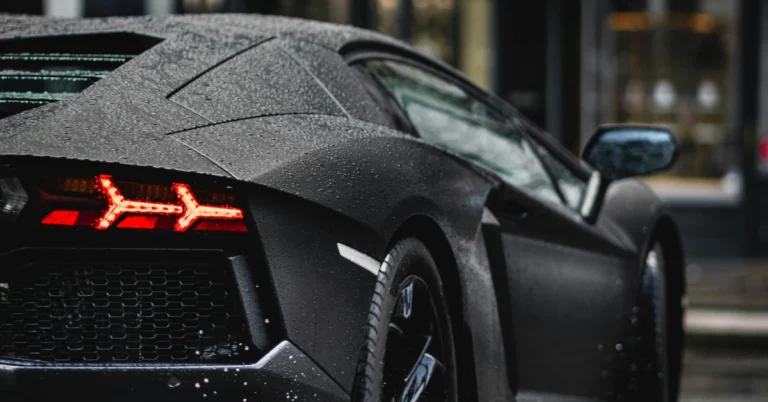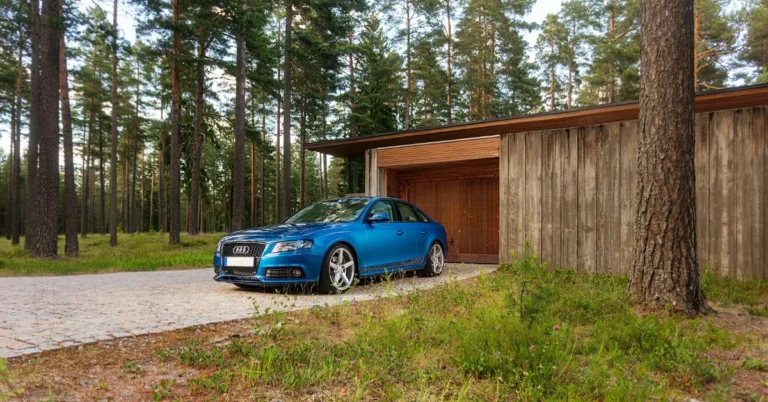Do you remember the iconic 90s Japanese cars that ruled the streets and racetracks? From the sleek lines of the Toyota Supra to the agile handling of the Honda NSX, these cars were the epitome of Japanese engineering and design. And while they may be considered “old” through their age, their popularity and influence have only grown over the years.
If you’re a fan of 90s Japanese cars, like we are, you also love their unique blend of style, performance, reliability and for sure that’s hard to find in modern cars. And thanks to their timeless design and solid build quality, they continue to hold their value and attract a dedicated following.
So, whether you’re a seasoned collector or a newcomer to the world of 90s Japanese cars, we´d like to take you back to the 90´s and have a look into the past of these awesome automobiles.
Overview of 90s Japanese Cars
We can’t deny our love for 90s Japanese cars; they undoubtedly left a mark on the automotive world and have stayed in our hearts. The ’90s witnessed the zenith of Japanese automotive engineering, with several iconic sports cars emerging from the land of the rising sun. These cars have stood the test of time in terms of design, performance, and popularity.
Some of the most memorable and exciting Japanese vehicles from the ’90s include the Mazda RX-7 Twin-Turbo, the legendary Toyota Supra, and the cutting-edge Nissan Skyline GT-R R34. These cars gained a cult status among car enthusiasts and racing fans worldwide.
The ’90s were also the time when Japanese automakers started focusing on innovative technology and embracing new design philosophies. Cars like the Honda NSX and the Subaru Impreza WRX (which I think is the best all-wheel vehicle of all times) were milestones in their respective segments, offering performance and aesthetics ahead of their time.
But it wasn’t just sports cars that stood out in that decade. The ’90s Japanese cars lineup included remarkable family cars and compact models, too. The Honda Civic and Toyota Camry, for example, became household names in the global car market.
As time goes by, many of these classic Japanese cars from the ’90s are becoming increasingly popular with collectors. They represent a golden era of innovation and design that continues to inspire today’s automotive landscape.
Appearance and Styles
We can all agree that the 90s was a golden age for Japanese car manufacturers. During this decade, 90s Japanese cars boasted unique appearances and styles that were innovative and eye-catching. Let’s dive deeper into the design elements that set these vehicles apart from the rest.
I advice you to look more accurate on the design details, every car looked really different.
In the 1990s, Japanese car designers were fearless in their approach to automotive design. They introduced some of the most iconic car shapes and styles, drawing inspiration from different sources such as anime, technology, and even nature. Take, for example, the stunning curves of the Mazda RX-7 or the aggressive lines of the Nissan Skyline GT-R R34. These cars dared to be different, standing out on the streets and making a statement.

Another notable design aspect of 90s Japanese cars was their focus on aerodynamics. Designers integrated wind-tunnel research and cutting-edge materials into their creations, resulting in cars that sliced through the air effortlessly. This can be seen in the Honda NSX and Toyota Supra, which both showcased low-slung profiles and slick body lines, helping to reduce air resistance and enhance performance.
Of course, we can’t discuss 90s Japanese cars without mentioning their vivid and bold hues that made these cars instantly recognizable. Apart from the classic metal tones found in other vehicles at the time, Japanese car manufacturers embraced a wider color palette. Bright colors like Sonic Blue, Championship White, and Midnight Purple captured the spirit of the 90s, turning heads on the streets and giving the cars a distinct look.
In conclusion, the appearance and styles of 90s Japanese cars made this decade an unforgettable era in the automotive world. The combination of daring designs, aerodynamics, and vibrant colors set these cars apart from the competition and created lasting impressions that are still appreciated today.
Notable Car Manufacturers
The golden era of 90s Japanese cars showcased the engineering prowess and innovative designs of Japan’s leading automotive giants. Let’s explore the remarkable contributions of some of the most prominent manufacturers during this period.
Toyota
Toyota, one of Japan’s dominant car manufacturers, created numerous noteworthy vehicles in the 1990s. Among them, the Toyota Supra stands out as a legendary sports car that won fans across the globe. It’s worth mentioning the Celica, another sports car that balanced power and affordability, and the iconic Land Cruiser, which showcased Toyota’s prowess in making off-road vehicles.
Honda
Honda, known for its innovative designs, captivated the hearts of car enthusiasts with their impressive lineup of 90s models. The Honda NSX, in particular, became a symbol of Japanese supercar engineering, sparking a revolution in performance vehicles. Equally popular were the Civic and Accord models, which demonstrated Honda’s ability to create reliable and fuel-efficient everyday cars.
Nissan
Nissan set the bar high for 90s Japanese cars with their now-legendary GT-R (R32/R33/R34) series, featuring sophisticated technology and unparalleled performance. The Nissan 300ZX also gained popularity for its sleek design and powerful turbocharged engine. The Silvia, another noteworthy Nissan model, enthralled the drifting community with its exceptional handling capabilities.
Mazda
Mazda’s 90s lineup offered an intriguing mix of style, performance, and innovation. Their flagship RX-7 sports car, boasting a unique rotary engine and exquisite design, served as the poster child for Mazda’s engineering powers. Meanwhile, the MX-5 Miata, with its delightful driving dynamics and accessible price point, became a symbol of pure, unadulterated motoring joy.
Subaru
Known for their rugged all-wheel drive systems, Subaru made a name for itself among 90s Japanese car aficionados with their performance-focused Impreza WRX and WRX STI models. These rally-inspired machines became synonymous with both on-road prowess and off-road capability. Subaru’s unique approach to engineering, as seen in their signature boxer engine design, further set them apart in the world of automotive ingenuity.

Influence on Modern Design
It’s undeniable that 90s Japanese cars left a lasting impression on the automotive world. With their unique styling, impressive performance, and cutting-edge technology, they continue to influence modern car design even today. In this section, we will explore the impact of these iconic vehicles on today’s automobile market.
One of the key design elements that originated from 90s Japanese cars is the concept of aerodynamic efficiency. Car manufacturers at the time focused on designing sleek, smooth body lines to reduce drag and enhance fuel efficiency. This principle has carried over into the design ethos of modern cars, with many automakers prioritizing aerodynamic performance in their creations.
Alongside aerodynamics, 90s Japanese cars showcased advanced technology, such as Mazda’s rotary engine and Nissan’s ATTESA E-TS all-wheel-drive system. These innovations demonstrated the forward-thinking approach of Japanese automakers and inspired the introduction of similar technology in modern cars. As a result, today’s vehicles benefit from increased fuel efficiency, enhanced performance, and improved safety features.
In addition, the 90s saw the rise of performance-focused Japanese cars like the Nissan Skyline GT-R, Toyota Supra, and Honda NSX. These vehicles gained global recognition for their outstanding performance capabilities and have become cherished collector’s items. The popularity of these classics has motivated automakers to create modern successors that pay homage to their heritage, such as the newly-released Acura NSX and Nissan GT-R.
Finally, the distinctive design language of 90s Japanese cars has persisted through time. For instance, the Mazda RX-7’s iconic pop-up headlights may not appear on any new models, but their aesthetic has left a mark on automotive enthusiasts who appreciate their novelty and charm. Likewise, the clean, minimalistic interiors characteristic of 90s JDM cars have influenced the uncluttered, functional cabin designs seen in many contemporary vehicles.
In conclusion, the influence of 90s Japanese cars on modern design is evident in the prevalence of aerodynamic features, advanced technology, performance-focused models, and distinctive design language. Their impact continues to shape the automotive landscape, reminding us why these vehicles hold such a special place in the hearts of car enthusiasts.
High-Performance Models
Some of the most iconic 90s Japanese cars were high-performance models that made a lasting impact on the automotive world. In this section, we’ll take a closer look at three standout examples: the Nissan Skyline GT-R, Mazda RX-7, and Toyota Supra.
Nissan Skyline GT-R
The Nissan Skyline GT-R is one of the most legendary Japanese sports cars from the 90s. Known for its powerful engine and exceptional handling, this car quickly gained fame when it dominated racing circuits worldwide. The GT-R came in two distinct generations during the 90s – the R32 and the R33. Equipped with a twin-turbocharged inline-six engine, the GT-R delivered a remarkable driving experience that’s still revered by enthusiasts today. Its advanced all-wheel-drive system and innovative engineering make it a true icon in the world of 90s Japanese cars.
Mazda RX-7
The Mazda RX-7 is another shining example of high-performance 90s Japanese cars. This sleek, lightweight sports car was known for its distinctive Wankel rotary engine, which made it stand out from the competition. The RX-7’s third generation, the FD, was introduced in 1992 with a twin-turbocharged 13B-REW engine that provided exhilarating performance and just the right amount of trademark rotary engine sound. Its agile handling, smooth power delivery, and striking design made it an instant classic among car enthusiasts.
Toyota Supra
Last but not least, we have the Toyota Supra, a name synonymous with the high-performance 90s Japanese cars. The fourth-generation Supra, known as the A80, took the automotive world by storm when it was introduced in 1993. This rear-wheel-drive sports car was powered by a twin-turbocharged inline-six engine, producing an impressive amount of horsepower. The Supra quickly became famous for its ability to be tuned to achieve even higher levels of performance, making it a favorite among the racing and tuning community. Its iconic design and memorable driving experience make it a staple in the world of 90s Japanese cars.

Economy Car Models
During the 90s, Japanese car manufacturers crafted some of the most popular and reliable vehicles on the market. One standout aspect of these vehicles was their economy, with top models boasting impressive fuel-efficiency and reliability. Let’s dive into a few iconic economy car models from this golden age of 90s Japanese cars, focusing on the Toyota Corolla, Honda Civic, and Nissan Sentra.
Toyota Corolla
The Toyota Corolla of the 1990s remained a staple choice for budget-conscious buyers worldwide. Renowned for its longevity, practicality, and fuel-efficiency, this model quickly earned its place as one of the most beloved vehicles of its time. With its compact design and reputation for reliability, the Corolla ensured that drivers could depend on their cars for years to come.
Honda Civic
Another household name in 90s Japanese economy cars is the Honda Civic. This model was particularly known for its sleek design and innovative engineering. The 1990s saw the Civic go through several iterations, each offering improved performance and technology while maintaining its affordability and fuel efficiency. A well-rounded choice for many drivers, the Honda Civic was an appealing option for those seeking a high-quality car without breaking the bank.
Nissan Sentra
The Nissan Sentra may not have garnered quite as much widespread attention as the Toyota Corolla or Honda Civic, but this 90s Japanese car was a strong contender in the economy car market. The Sentra was nimble, fuel-efficient, and offered exceptional value for money. With a variety of trims and options to suit various budgets, the Nissan Sentra proved itself to be a reliable, practical, and cost-effective option for drivers seeking a well-built car at an accessible price point.
To sum it up, the 90s Japanese car scene gave birth to some remarkable economy car models, such as the Toyota Corolla, Honda Civic, and Nissan Sentra, which continue to be appreciated for their reliability and excellent value even today.

Influence on Racing Culture
When we think of 90s Japanese cars, we can’t help but acknowledge the significant impact they had on the racing culture of that era. These cars not only gave rise to a new breed of high-performance street machines, but also influenced not only the world of motorsports in more ways than one, i think we even builded a generation which gets together just for the cars.
One of the most notable aspects of 90s Japanese cars was their focus on technology and innovation. The introduction of advanced engineering, like the VTEC system used in Honda engines, and Toyota’s twin turbocharging technology in the Supra vastly improved their performance capabilities. These advances made Japanese cars not just more powerful, but also more reliable, leading to increased interest in tuning and customization, both on and off the track.
The popularity of these vehicles reached an all-time high with the advent of the “tuner” scene. Enthusiasts all over the world embraced the Japanese car culture, swapping out parts, adding aftermarket modifications, and boosting their vehicles’ performance to impressive levels. Television shows and movies, like The Fast and the Furious series, further solidified the influence of 90s Japanese cars on contemporary racing culture.
Another significant way the 90s Japanese cars impacted racing culture was through their successes in motorsports competitions. Cars like the Mazda RX-7 and Nissan Skyline GT-R were prominent on the international racing circuit, winning numerous titles and garnering a devoted following. Additionally, the rise of drifting as a popular motorsport can be largely attributed to Japanese car manufacturers like Nissan and Toyota, who produced vehicles perfect for sliding around corners with precision and style.
Finally, the influence of 90s Japanese cars extended beyond racing and into the realm of automotive design. The sleek, clean lines of vehicles like the Toyota Supra and Honda NSX became iconic, inspiring future generations of car designers and enthusiasts alike. The distinct design language of these vehicles remains influential even today, as modern Japanese automakers continue to build upon the legacy of their 90s predecessors.
In conclusion, through their innovative technology, prowess on the track, and unique design language, the 90s Japanese cars have left an indelible mark on the racing culture. Their legacy continues to permeate the automotive world, shaping the vehicles we know and love today.
Legacy and Impact on the Auto Industry
During the 90s, Japanese car manufacturers focused on producing reliable, fuel-efficient cars with a keen sense of style and performance. Models like the 1990 Acura NSX paved the way for a new generation of sports cars that offered both luxury and affordability. The success of these vehicles led to increased competition among global automakers, raising the bar for quality and innovation.

Japanese carmakers also popularized the concept of lean manufacturing, which has since been adopted by numerous industries. The lean system focuses on reducing waste and increasing efficiency, and it played a significant role in the Japanese automotive industry’s rise to prominence during the 90s. By implementing these techniques, they were able to provide their consumers with affordable and high-quality vehicles without sacrificing profit margins. And when you look closely you´ll find that most companys today living the lean system, as i noticed.
Lastly, the keiretsu system, which was a hallmark of Japanese industrial organization in the 90s, played a major role in helping automakers compete in the global market. The keiretsu advantage created a close-knit network of companies that supported each other, allowing for a level of collaboration and innovation that was difficult for competitors to match.
In conclusion, the legacy of 90s Japanese cars goes beyond the vehicles themselves and extends into many aspects of the auto industry as a whole. From fostering competition among global manufacturers to pioneering lean production techniques, the impact of these cars cannot be overstated. As we cruise down memory lane in our beloved 90s Japanese cars, we can appreciate not just their stylish aesthetics and performance but also the lasting influence they’ve had on the automotive world.
Our Opinion on 90s Japanese Cars
We have always been fans of 90s Japanese cars. These vehicles represent a golden age in automotive design and performance, with many of them still highly regarded by enthusiasts today. Their combination of stylish design, advanced technology, and impressive performance took the world by storm, and these are just some of the reasons why we appreciate them so much.
The 1990s saw Japanese automakers embrace a newfound confidence, resulting in a range of vehicles that are both powerful and visually striking. Some of the best examples of this era include the iconic Nissan Skyline GT-R, the sleek Mazda RX-7, and the nimble Honda NSX. These cars set a standard for sports cars around the world.
Another aspect that makes 90s Japanese cars so special is their accessibility. Unlike many other sports cars from the era, which were often exclusive and expensive, Japanese cars offered a more balanced mix of performance and affordability. This made them an attractive proposition for a much wider audience, especially among younger drivers. Moreover, these vehicles are often easier to maintain, as they use reliable and widely-available components.
One particular hallmark of 90s Japanese cars is their innovative use of technology, such as the Toyota Supra’s sophisticated twin-turbo engine or the all-wheel drive system found in the Subaru Impreza WRX. These technological advancements allowed Japanese cars to rival their European counterparts, and in some cases, even surpass them in terms of performance.
In summary, our appreciation for 90s Japanese cars stems from their remarkable designs, performance capabilities, affordability, and pioneering use of technology. Many of the models from this era hold a special place in automotive history and continue to inspire car enthusiasts all around the world. We believe that these vehicles truly represent a golden era in Japanese automotive manufacturing and stand as a testament to the ingenuity and dedication of their creators.
FAQ
What is a 90s JDM car?
A 90s JDM car refers to a Japanese Domestic Market car manufactured and sold in the 1990s. These cars, such as the Nissan Skyline GT-R, Toyota Supra, and Honda NSX, were known for their high performance, advanced technology, and distinctive styling, and have become popular among car enthusiasts worldwide.
Why are 90s Japanese cars so good?
90s Japanese cars are considered good due to their high-quality engineering, advanced technology, and reliability. They were also designed with a focus on performance, which made them popular among car enthusiasts. Additionally, they were often priced competitively and offered a great value for their features and capabilities.
Are JDM cars legal in US?
JDM cars are legal in the US, but they must meet certain requirements to be imported and registered. These requirements include compliance with US emissions and safety standards, as well as passing various inspections and tests. Some JDM cars may also be subject to additional restrictions or modifications before they can be legally driven on US roads.
Now, that you know a lot more about the influence of 90s Japanese cars, what is your opinion? Would you like to have one of these powerful legends? Let us know what you think.





